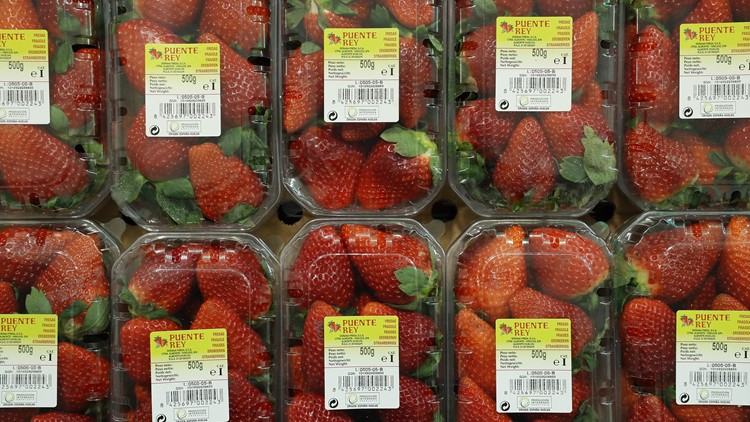If you're wary of the promises of organic produce, maybe you should at the very least start eating organic strawberries, recent research suggests.
For the third straight year, strawberries top the Environmental Working Group's Dirty Dozen list of fruits and vegetables with the most pesticide residues. But others view the report with skepticism.
About a third of all strawberry samples had at least 10 pesticides, the study found. One sample, had an "astounding" 22 pesticide residues, notes the EWG, a non-profit group advocating for better human and environmental health.
Following strawberries on the Dirty Dozen list was spinach, in which 97% of samples contained pesticides residues. Rounding out the top five were three common fruits: nectarines, apples and grapes.
The report bases its findings on nearly 39,000 U.S. Department of Agriculture tests of 47 fruits and vegetables. It found nearly 70% of "conventionally grown produce" has pesticides and almost all — 98% — of strawberries, peaches, nectarines, cherries and apples contained at least one pesticide.
The "Dirty Dozen" list has often been criticized for being misleading. Some scientists believe that the way the EWG analyzes its data is flawed. According to the Journal of Toxicology, the levels of pesticides found in the Dirty Dozen all fell below the EPA limit. In a press release, Monsanto also highlighted that fact.
"Even at the highest level reported by the EWG (1,300 ppb), an adult would have to eat 118 pounds of the food item every day for the rest of their life to reach the EPA’s limit," the release said.
Meanwhile, the EWG's Clean Fifteen list features the produce "least likely to contain pesticide residues." Fewer than 1% of avocado and sweet corn samples featured pesticides, earning avocado the top spot on the list followed by sweet corn.
There was also good news for eaters of pineapples, papayas, asparagus, onions and cabbage. More than 80% of the time, these fruits and vegetables contained no pesticides, which can cause adverse health effects related to pregnancy complications and children with low IQs.
However, the U.S. Environmental Protection Agency says today's fruits and vegetables are "safer than ever." The Alliance for Food and Farming, which represents organic and non-organic growers, said the Dirty Dozen list is "unsupportable." It points to USDA and U.S. Food and Drug Administration data which shows 99% of residues are "well below safety levels" set by the Environmental Protection Agency.
The alliance's executive director Teresa Thorne said the list may deter low-income consumers from buying fruits and vegetables and "may be harming public health efforts to improve the diets of Americans."
Here are the lists in full:
The Dirty Dozen:
1. Strawberries
2. Spinach
3. Nectarines
4. Apples
5. Grapes
6. Peaches
7. Cherries
8. Pears
9. Tomatoes
10. Celery
11. Potatoes
12. Sweet bell peppers
Plus: Hot peppers
The Clean Fifteen
1. Avocados
2. Sweet corn
3. Pineapples
4. Cabbages
5. Onions
6. Sweet peas, frozen
7. Papayas
8. Asparagus
9. Mangoes
10. Eggplants
11. Honeydew melons
12. Kiwis
13. Cantaloupes
14. Cauliflower
15. Broccoli



